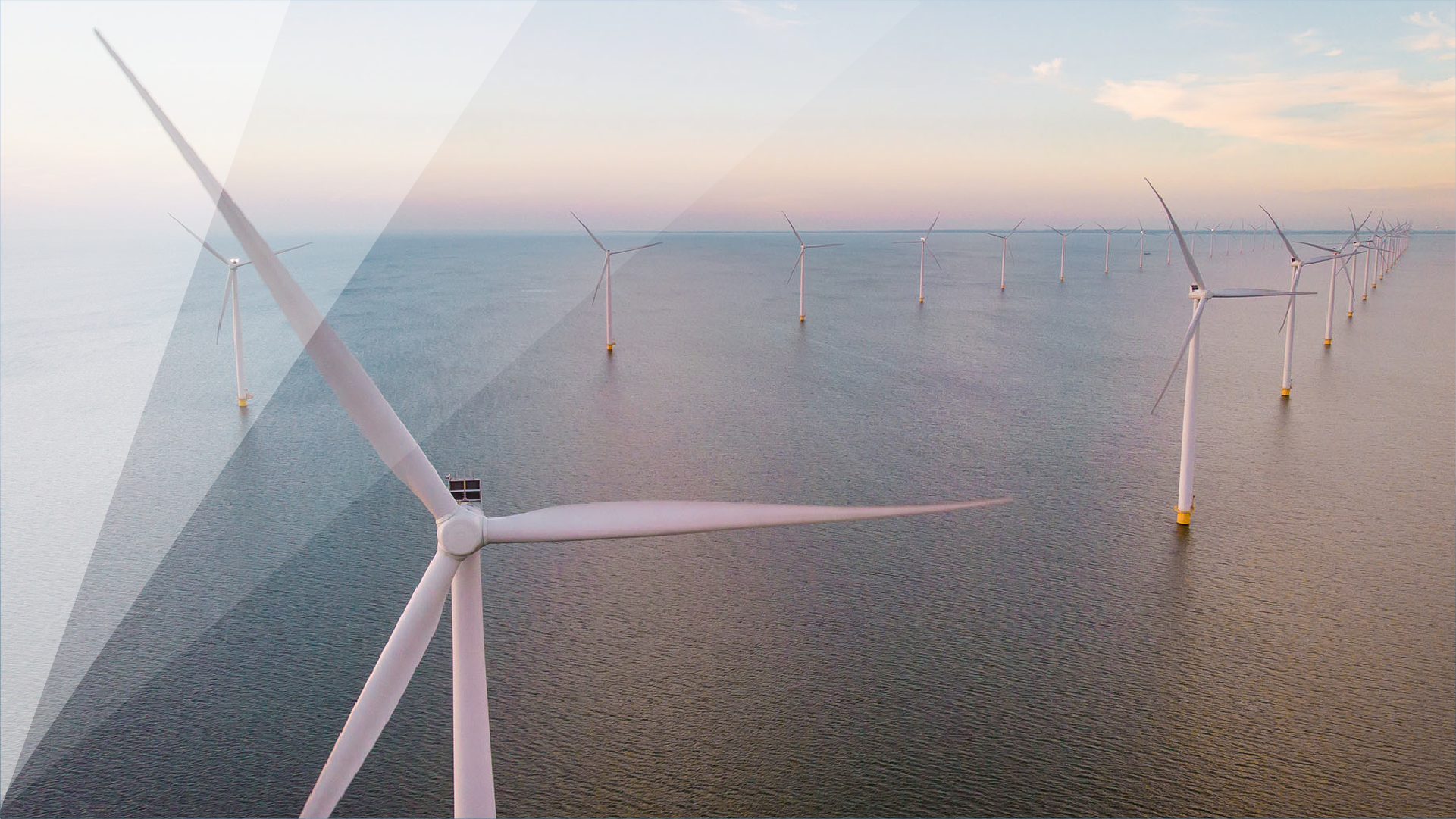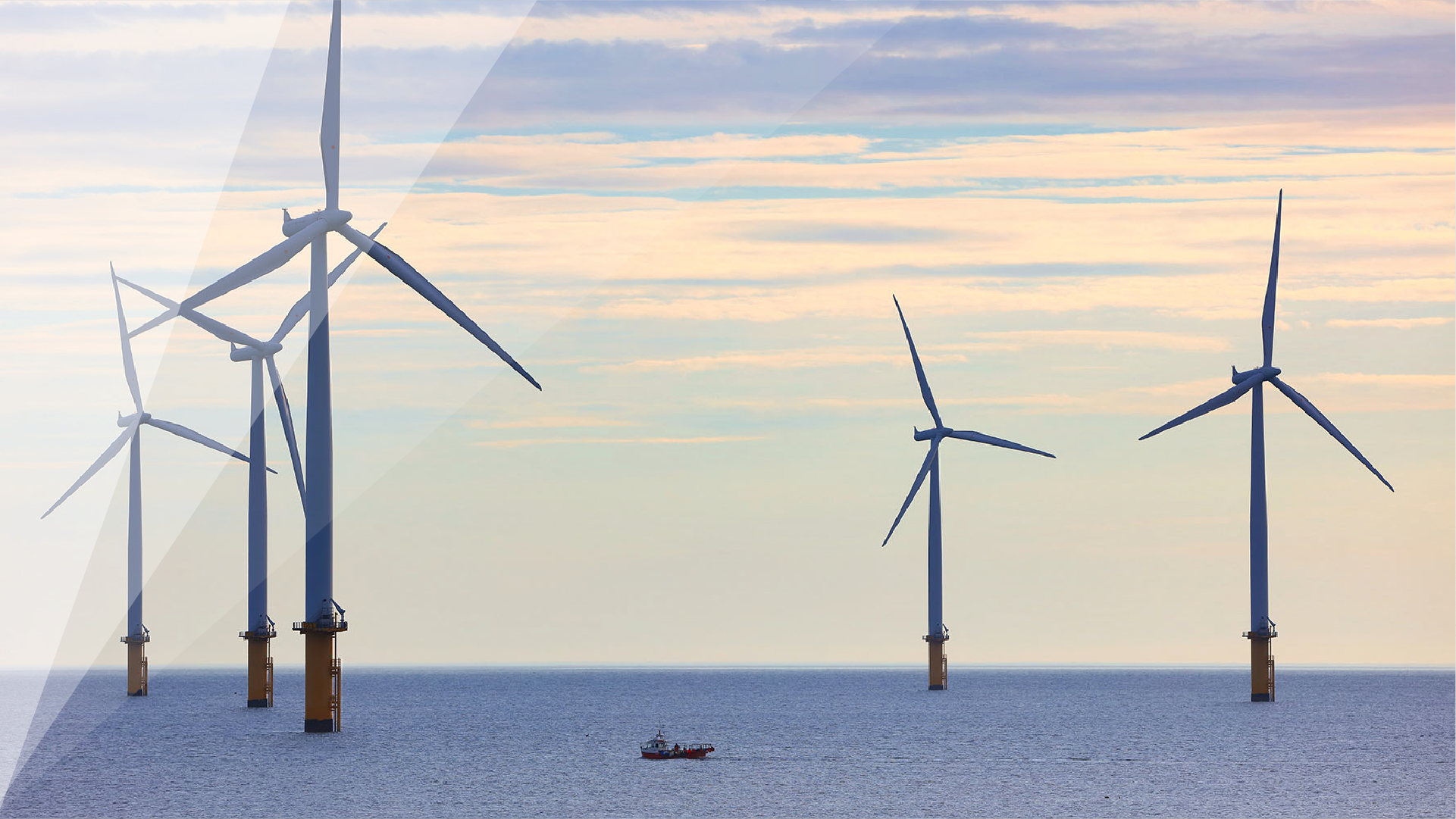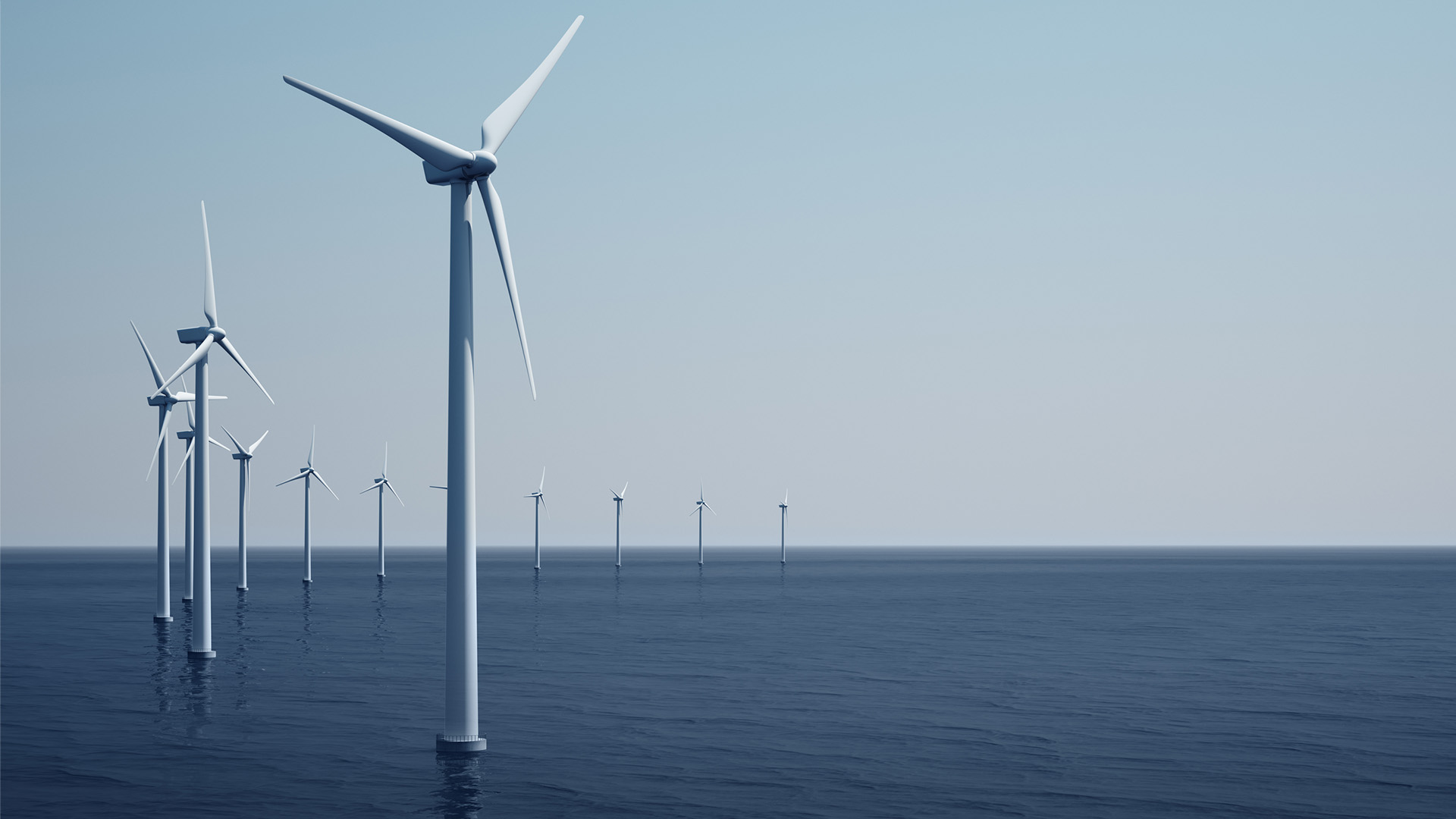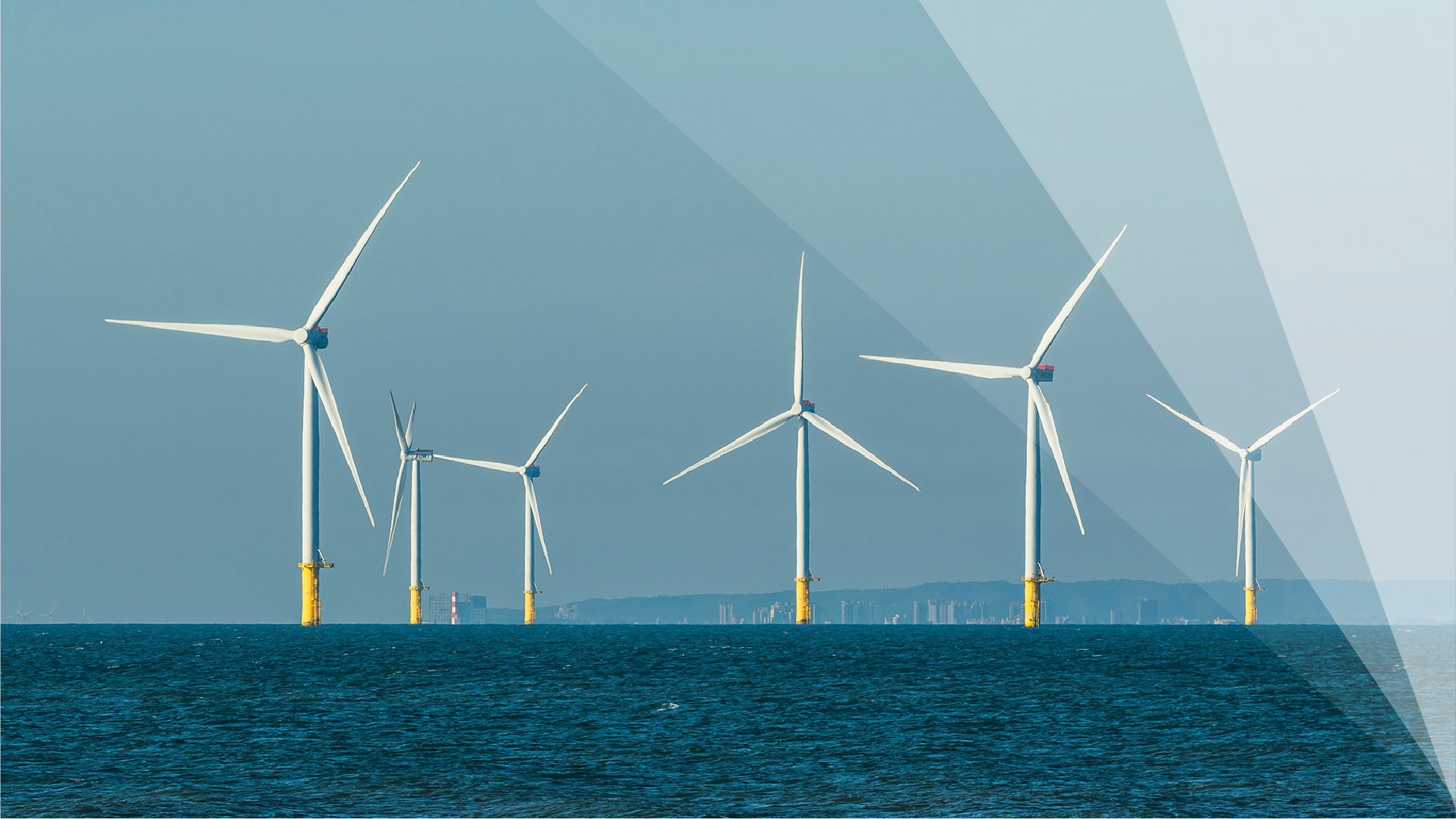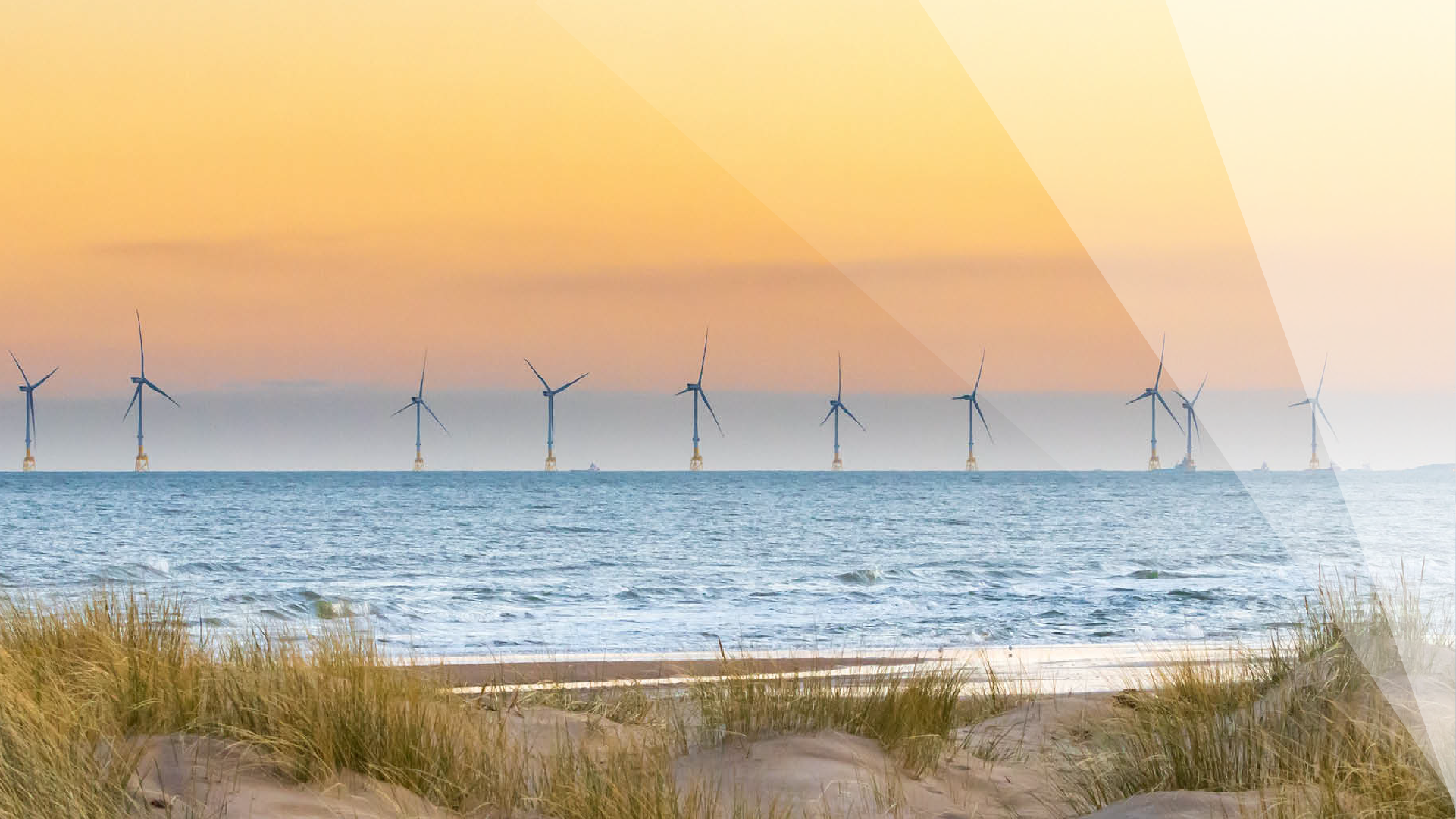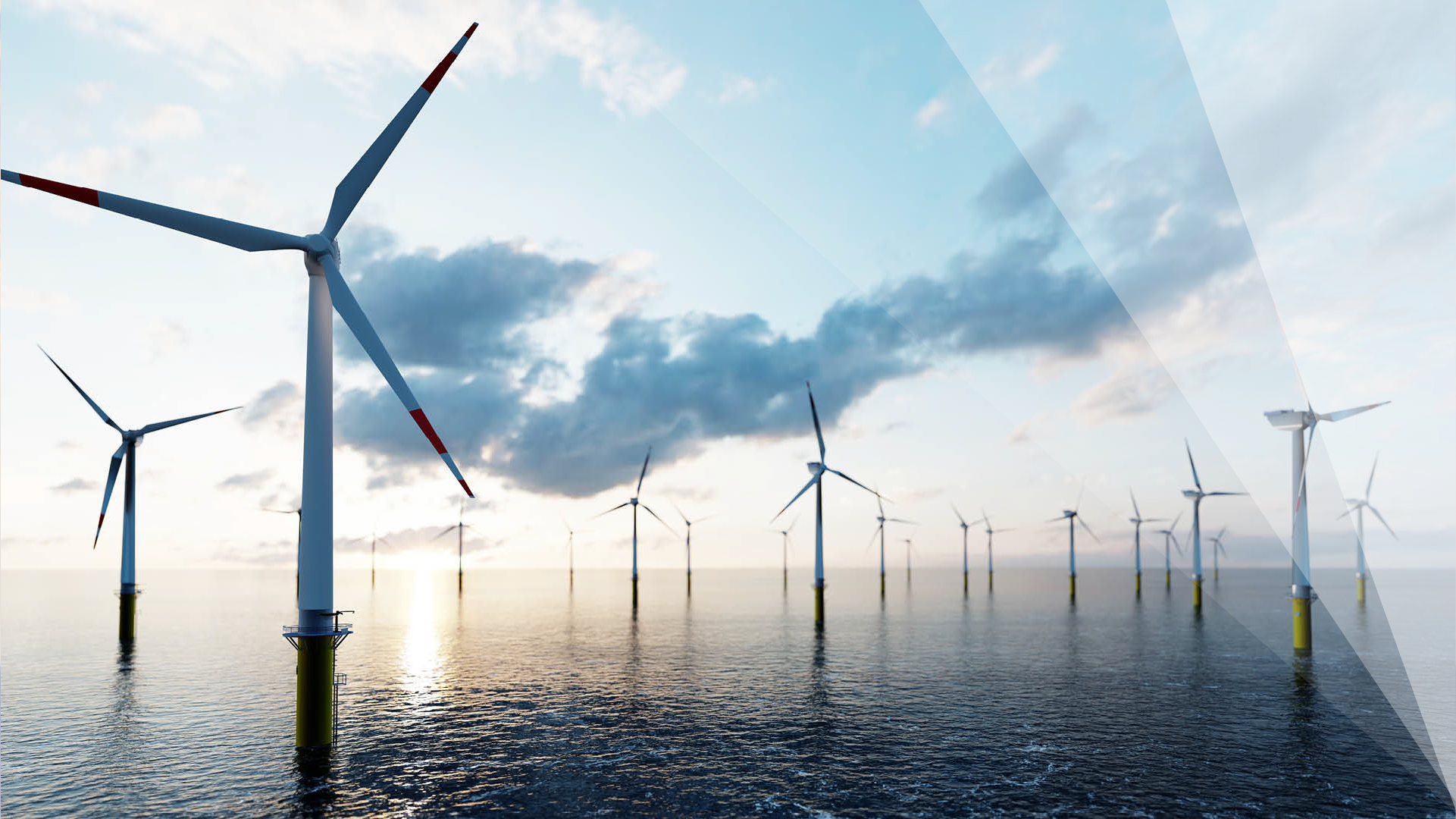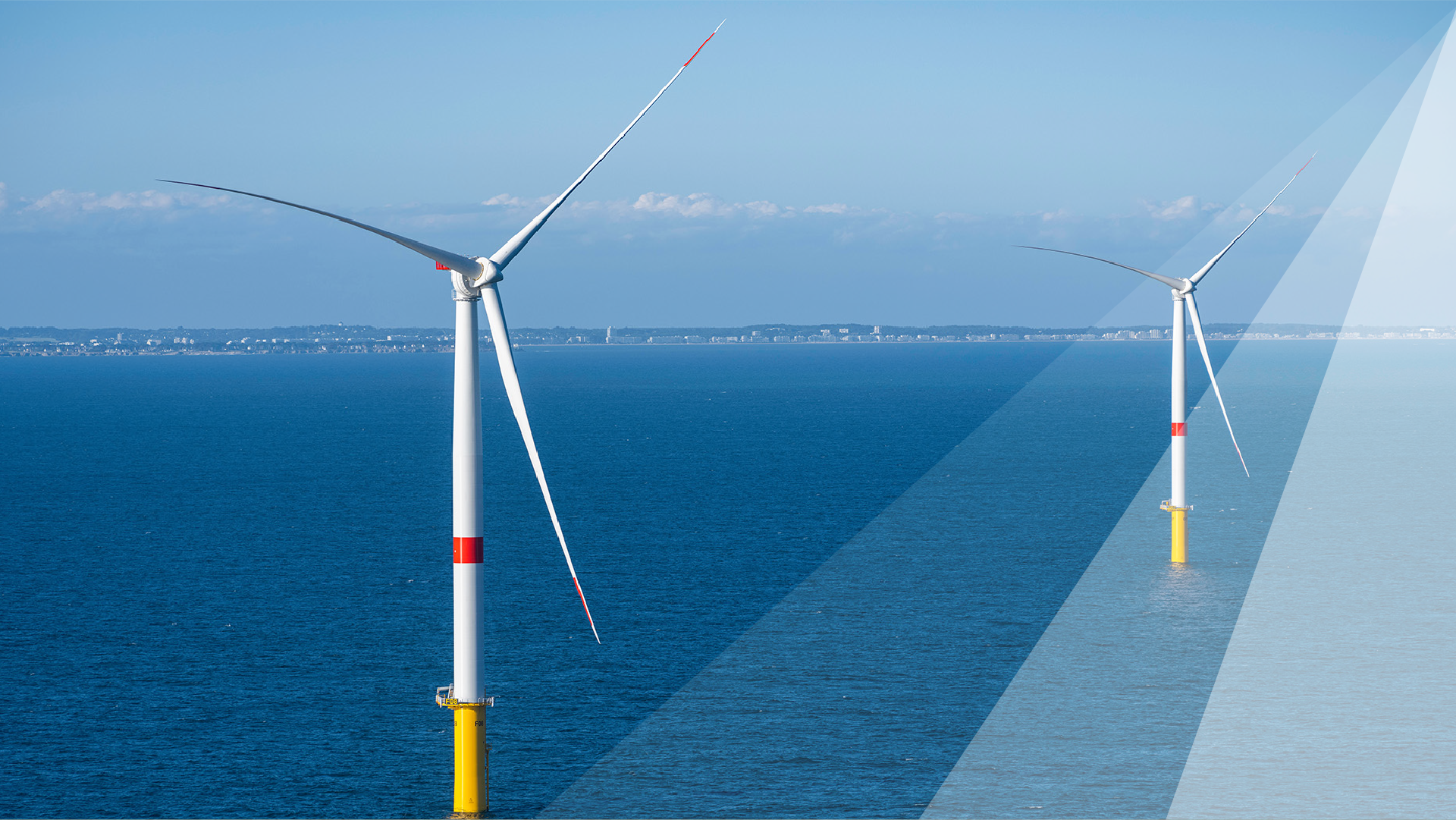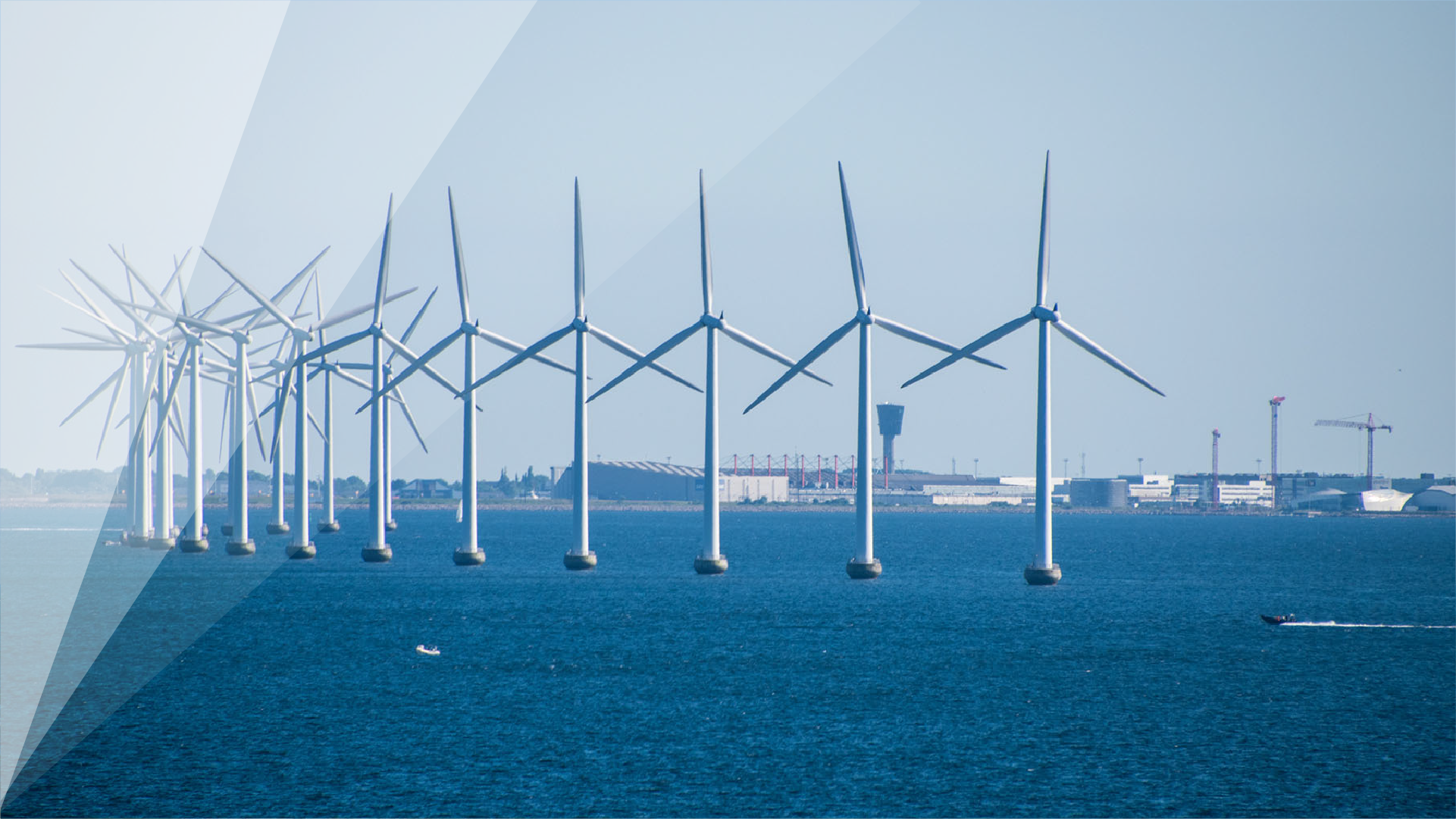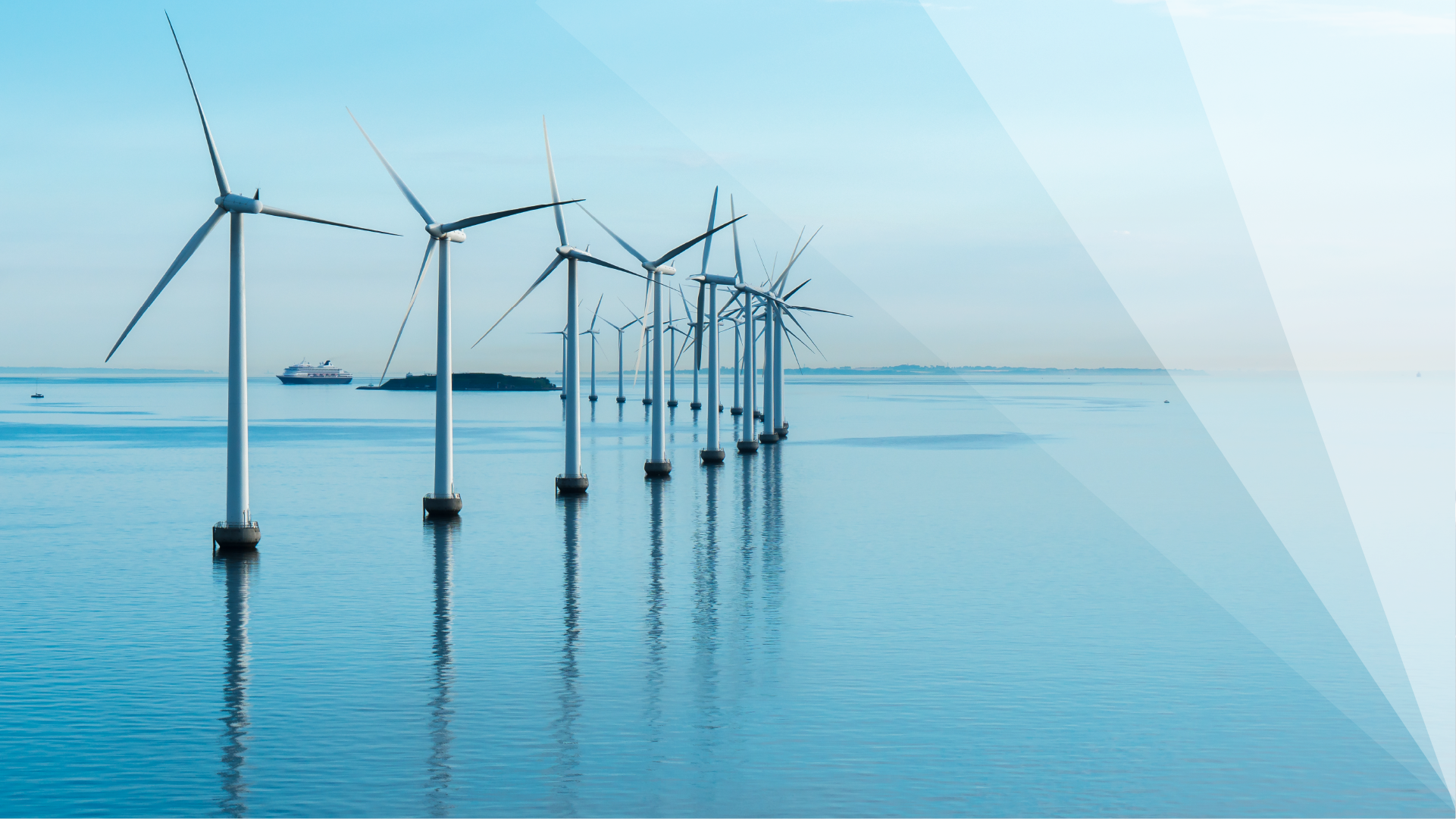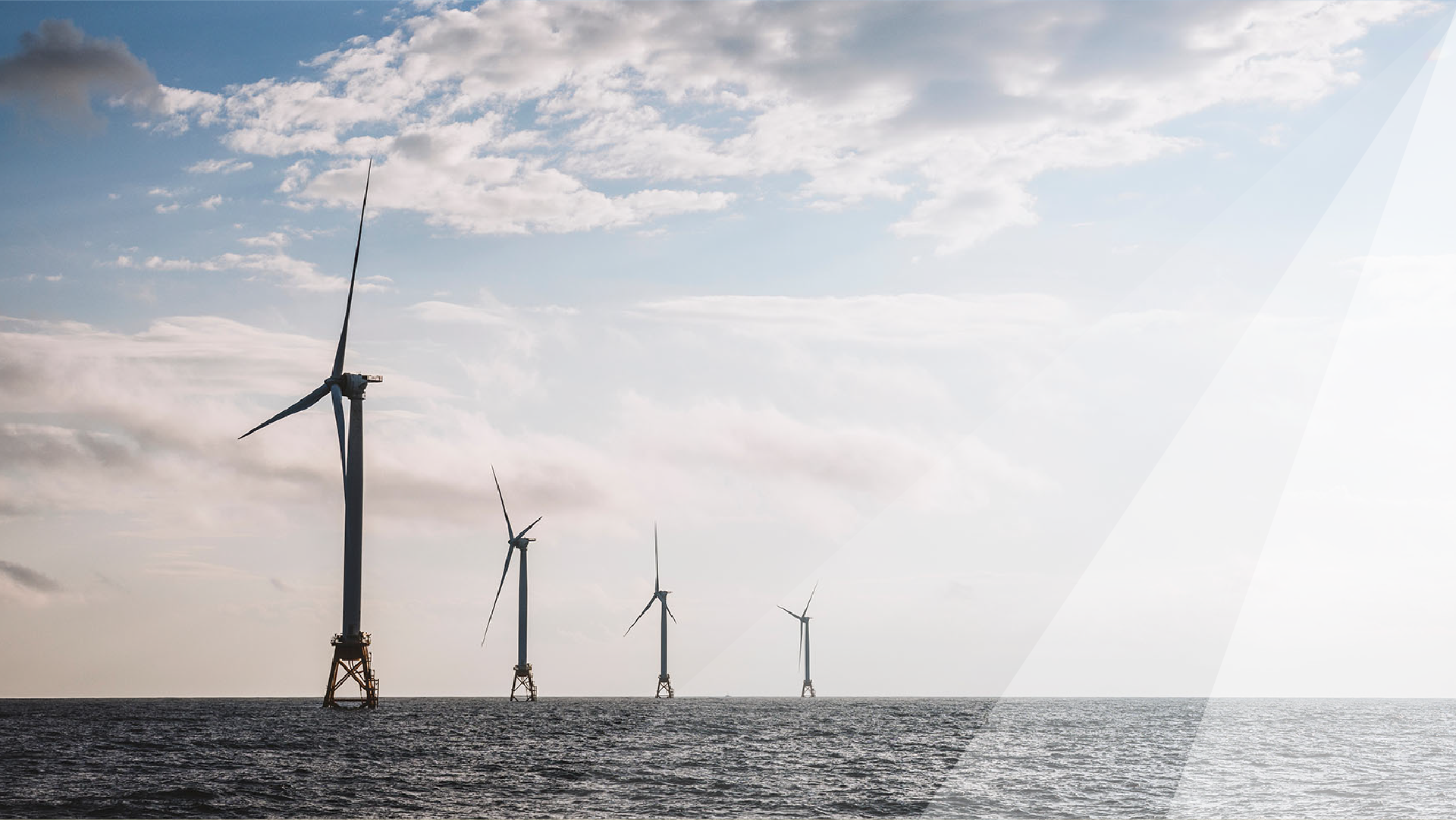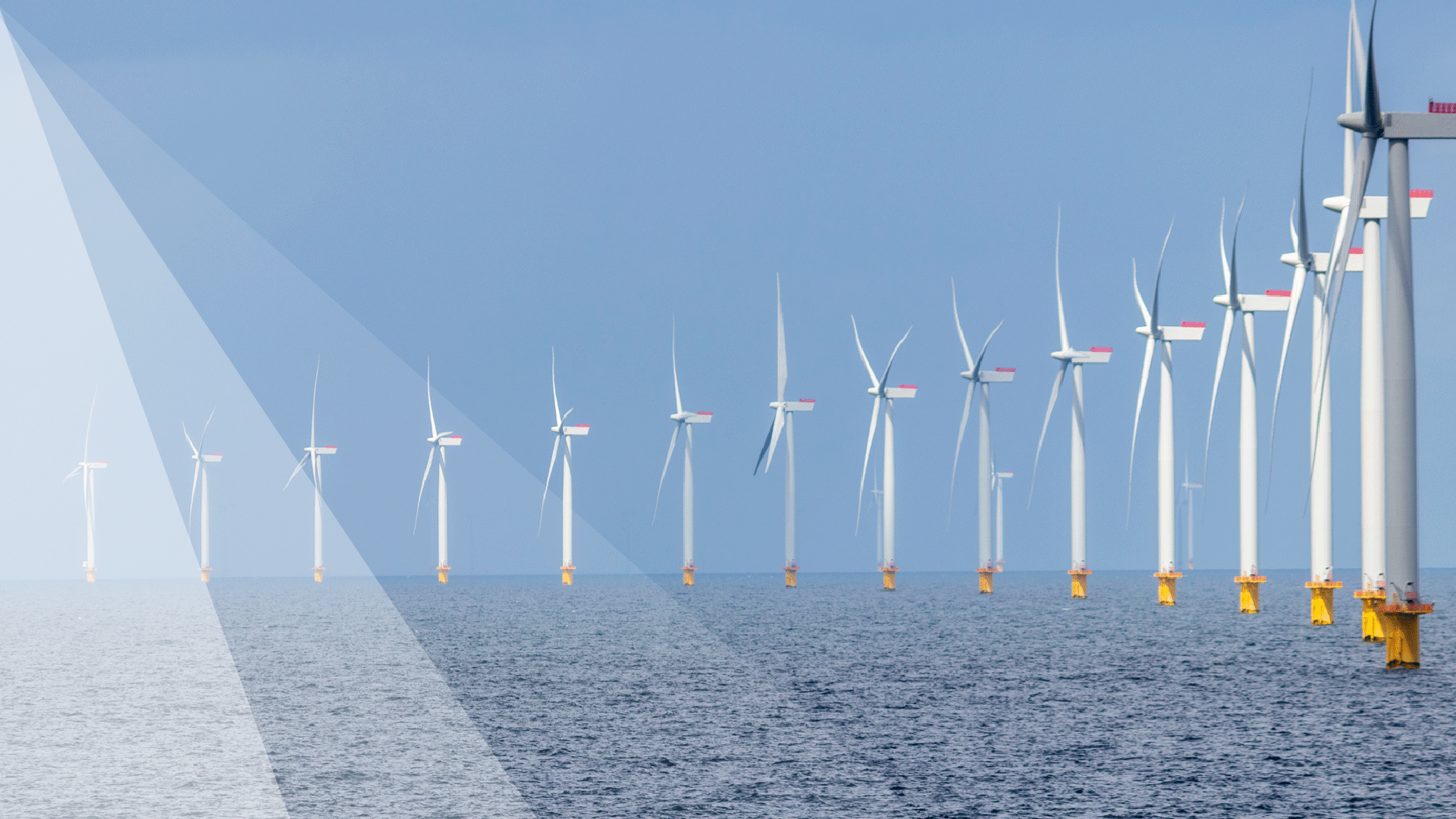
Global offshore wind: Belgium
Global | 出版物 | March 2024
Information correct as at 12 February 2025
Introduction
In collaboration with 
With nine operational offshore wind farms, Belgium is amongst Europe’s leading offshore wind markets, following in the footsteps of the largest offshore wind energy producers globally, like China, the UK and Germany.
There are also plans for a new zone for offshore wind farms in front of the West Coast, the ‘Princess Elisabeth’ zone.
Pooling existing and planned zones, the total offshore wind capacity in Belgium is expected to increase to 5.8 GW by 2030, tripling its current capacity. The first phase of 0.7 GW will be installed by 2028, and the remaining 2.8 GW will be operational by the end of 2029. It is expected that by 2030, 25 percent of the electricity production can come from the Belgian North Sea, saving in total 8.6 million tonnes of CO2 per year. A further expansion to 8 GW is planned by 2040. To reach this ambition, Belgium will have to produce 400 MW of wind energy annually.
The Belgian federal government fully supports the European ambitions to reduce greenhouse gas emissions by 55 percent by 2030 and to achieve climate neutrality by 2050.
Offshore wind farms operating worldwide as of June 2024

Overview of operational, construction and consented projects

Belgium: Current offshore wind projects

Belgium: Shareholdings in offshore wind projects
|
Project Name |
MW |
Year |
Shareholders |
|
|
1/2. |
SeaMade (Mermaid/Seastar) |
235 /252 |
2020 |
12.5% Eneco Wind Belgium – ENGIE Electrabel (17.5%) – Otary RS NV, in which several parties are united (70%).1 |
|
3. |
Belwind |
171 |
2010 |
41% Parkwind – 39% Sumitomo – 20% Meewind.2 |
|
4. |
Northwind |
216 |
2014 |
70% Aspiravi Offshore NV – 30% Sumitomo.3 |
|
5. |
Nobelwind |
165 |
2017 |
41,08% Parkwind – 39,02% Sumitomo – 19,9% Meewind.4 |
|
6. |
Rentel |
309 |
2018 |
Otary – SOCOFE – WE – Power at Sea – Zkracht – Aspiravi – GreenOffshore – Elicio – DEME.5 |
|
7. |
Norther |
370 |
2019 |
50% Elicio NV – 50% Eneco.6 |
|
8. |
Northwestern |
219 |
2020 |
70% Parkwind – 30% Summit Tailwind Belgium.7 |
|
9. |
C-Power |
325 |
2009 |
SOCOFE – DEME NV – Nuhma – EDF Energies Nouvelles Group – Societe Regionale d'Investissement de Wallonie – RWE Renewables.8 |
Belgium: offshore wind energy
Without offshore wind Belgian’s targets in RE will not succeed
Offshore wind energy is an indispensable part of the Belgian climate plan; without this North Sea energy resource, it would not be possible to achieve the European Union renewable energy targets for Belgium. By 2030, approximately 25 percent of the Belgian electricity production could come from the Belgian North Sea, saving a total of 8,6 million tonnes of CO2 per year.
See infra 7. for challenges related to this issue.
Employment
The construction of an average offshore wind project creates approximately 1,400 direct jobs and an equal number of indirect jobs during the development and construction phase. The operating phase creates an average of 100 new jobs per wind farm. In concrete terms, this means that the development of the Belgian offshore wind industry, with its linked export activities, will create approximately from 14,000 (2020) to 24,000 (2030) jobs for the development, construction, operation and maintenance of the wind farms. The offshore wind industry can continue to make an important contribution (directly or indirectly) in the energy sector providing about 50,000 direct jobs.9

Economic growth
In addition to the ecological need to further invest in offshore wind in the Belgian North Sea, the further development of the Belgian offshore wind industry is also an economic opportunity: adding €1,5bn year of value to the Belgian economy and numerous export opportunities for Belgian companies in Europe and globally.
Finally, it is important from an energy security perspective; the new offshore wind capacity will cover the closure of the two largest nuclear reactors: Doel 4 and Tihange 3 in 2022. As of the end of 2020, the operational wind capacity in the Belgian North Sea amounts to 2,262 MW.
Offshore wind record broken in Belgium
During December 2023, offshore wind energy covered 14,3 percent of the total electricity demand in Belgium. With a monthly production exceeding the 1 TWh mark, it easily surpassed the previous monthly record of 1075 GWh of December 2023.
The CREG report shows wind energy in Belgium rose to 14.1 TWh in 2023, making up over 18% of the country's 77.8 TWh total electricity production—enough to power over 4 million households annually. Together with the existing offshore wind farms, the total offshore wind capacity in Belgium could be increased to 5.8 GW by 2030, nearly tripling its current offshore capacity. This is line with the EU’s objective of supplying half of Europe’s electricity with wind energy by 2050.10
However, it seems this broken record is not enough to reach Belgian’s RE targets (see 7. challenges).
Belgium: Development process

Belgium: Support regimes and offtake
At federal level, green energy certificates are awarded per MWh. The transmission system operator is required to purchase Green Energy Certificates (GECs) at a guaranteed minimum price. The transmission system operator performs this public service obligation and therefore is obliged to purchase GECs awarded by the federal energy regulator from the renewable energy operator. Via Power Purchase Agreements (PPAs), concluded between a (green) electricity producer and an offtaker of the electricity, the electricity is (indirectly) brought to the consumers.
For installations with a financial close date before May 1, 2014 (including C-Power, Belwind and Northwind) the guaranteed minimum GEC price is €107/MWh for power generated by the first 216 MW of installed capacity and €90/MWh for generation resulting from installed capacity above the first 216 MW. The minimum price for Nobelwind (demerger of the initial Belwind domain concession) is €107/MWh for power generated by the first 45 MW of installed capacity and €90/MWh for generation resulting from the remaining 120 MW. The purchase obligation is valid for 20 years for these four wind farms.11
For the five other wind farms (Rentel, Norther, Mermaid, Seastar and Northwester 2), the minimum price per GEC depends on the electricity price (variable price setting mechanism). The minimum price is set by the CREG (Commission for Electricity and Gas Regulation) in accordance with the applicable provisions of the Royal Decree of 16 July 2002 (Article 14, § 1, 1°ter and 1°quarter as amended by the Royal Decree of 17 August 2018). The purchase obligation is valid for 19 years for the Rentel and Norther wind farms and for 17 years for the Mermaid, Seastar and Northwester 2 wind farms.
In certain periods of overproduction, no support will be given. For a maximum of 72 hours per calendar year, the minimum price is fixed at €0 when electricity production occurs at a time when the imbalance tariff is equal to or lower than €-20/MWh, or (ii) the day-ahead-price on the traded market is lower than €0/MWh during six consecutive hours. The imbalance tariff is published by the transmission system operator.
Recently, the Belgian Government decided to adjust the support mechanism for offshore wind power. From 2023 onwards, and for the entire duration of the support period (up to 16 years), the five “youngest” offshore wind farms – which can rely on a variable support mechanism based on the established reference price for electricity – will have to make a structural solidarity contribution. This means that when power prices are high, part of the profits will be returned to the government.
With the Royal Decree of 3 June 2024, the Princess Elisabeth Zone is subjected to a different support regime (see 8).
On 13th of September 2024, the European Commission approved a €682 million State aid scheme, under the Temporary Crisis and Transition Framework to support renewable offshore wind energy in Belgium to foster the transition towards a net-zero economy.
Turbine Suppliers


Belgium: Challenges
The transmission system operator has developed a power transmission grid in the Belgian part of the North Sea. With the creation of the Modular Offshore Grid (MOG) by Elia in 2019, four offshore wind farms (Rental, Seastar, Mermaid and Northwester) are connected to a high-voltage substation (power hub) located on an offshore platform (OSY), which will be connected to the onshore grid. The objectives of the MOG are to secure transmission of electricity and the security of the grid, to further improve electricity market integration and to minimise the environmental impact of the cables necessary to connect the offshore wind farms.
Offshore wind farms with a financial close date after December 31, 2016 are obliged to connect to the MOG in the North Sea, which has been operational since 2020. The MOG enables security of supply: if one of the offshore cables is defective or malfunctions, the wind farms can continue to inject their energy into the Belgian grid.
Thanks to the MOG, on 9th of January 2024, optimal generation of offshore wind energy was maintained during a cable incident. Today, the MOG marks five years of operation.
Supply of energy
The Belgian offshore wind sector, with a current capacity of 2,262 MW and 399 turbines, supplies 8 TWh annually, covering 10% of the country's electricity needs or 50% of household consumption. Amid geopolitical tensions and nuclear reactor shutdowns, like Doel 3 and Tihange 2 in 2022, Belgium faces energy supply risks, particularly in winter. The planned phase-out of nuclear power by 2025 heightens the urgency of expanding renewable energy to avoid blackouts, which could cost the economy €120 million per hour of downtime.
Risk of failing imposed offshore wind energy target by 2030 according to a WWF’s study October 2024.12
Despite Belgium’s efforts to increase its offshore wind energy and the broken record in 2023, a WWF study of October 2024 shows that Belgium has not allocated sufficient areas at sea to meet its non-binding offshore wind pledges for 2030.
The EU Member States have all allocated space for offshore wind energy to meet their 2030 and 2040 targets, aligning with the Paris Agreement. The analysis of ten coastal countries’ Maritime Spatial Plans reveals that, except for Belgium, all have enough space to meet or exceed their 2030 pledges, with some also meeting 2040 goals. The report emphasizes that balancing renewable energy deployment with nature protection is possible if Member States focus on project quality, engage coastal communities, and avoid conflicts with protected marine areas. However, Belgium and the Netherlands may need more space for 2040 to stay on track with the 1.5°C climate target.
See issue granting of environmental permit for connection of offshore wind farm on Princess Elisabeth Artificial Island with existing high-voltage power lines on the mainland.
Belgium: Hot topics
Princess Elisabeth Artificial Island
With the Princess Elisabeth Offshore Wind Development Zone, on the Princess Elisabeth Island, Belgium intends to build an artificial energy island, which will become the first energy island in the world. The energy island will act as a clean energy hub, aka a MOG, and is expected to handle up between 3.15 and 3.5GW of offshore wind power, connecting multiple offshore wind farms and efficiently transmitting electricity onshore to Belgium and other countries such as the UK and Denmark via subsea cables. It will become Belgium’s second offshore wind zone. This groundbreaking project plays a crucial role in connecting Belgium’s future offshore wind farms to the national grid, strengthening the nation’s dedication to expanding its renewable energy capacity. The PEZ will be constructed over.13
The energy island is expected to be completed in mid-2026. Thereafter, the construction of the electrical infrastructure by Elia will commence (2026-2030). In October 2023, Elia obtained the environmental permit to construct the Princess Elisabeth Artificial Island.
In April 2024, the initial components of the Princess Elisabeth Island were being assembled at the port of Vlissingen in the Netherlands by marine construction companies DEME and Jan De Nul on behalf of grid operator Elia. Elia has collaborated with conservation experts to develop a 'nature-inclusive' design aimed at positively contributing to biodiversity and marine life.
The European Commission has approved on September 23rd, 2024, a State aid scheme, composed of €682 million, to support the construction of the offshore windfarm in the Princess Elisabeth Zone (PEZ) in the North Sea.14
In October 2024, Elia Transmission Belgium (ETB) and the European Investment Bank (EIB) have entered into an agreement for a EUR 650 million green credit facility, with the funds to be allocated to the first phase of the Princess Elisabeth energy island project.
The energy island forms part of the larger Triton Link Project, where the two system operators Elia (Belgium) and Energinet (Denmark) are collaborating on the implementation of a subsea connection between their respective artificial offshore energy islands in the northern and southern parts of the North Sea. However, since August 2024, the construction of this subsea power cable is in jeopardy. Due to rising material costs and higher interest rates, Denmark is demanding more financial support from the Belgian government, which remains firm in its position. Denmark is now considering Germany as a potential co-investor.
Elia will commence the construction of the main electricity infrastructure to connect the island onshore after the completion of the energy island (scheduled in 2026). Elia was previously involved in the operation and maintenance of the 'Offshore Switchyard', part of the Modular Offshore Grid (MOG) in the Belgian North Sea.
The bidding procedure and criteria for tender are regulated by the Belgian Royal Decree of 3 June 2024. However, the long-awaited tender for the construction of the offshore wind farm is facing further delays due to the delay in obtaining a permit to connect the new wind farms on the Princess Elisabeth Artificial Island with existing high-voltage power lines on the mainland, like the Ventilus-line in West-Flanders. The initial tender was scheduled for the 28th of October, and has been postponed to the 14th of November. The competitive bidding started on the 25th of November 2024, with the publication of the announcement in the Belgian Official Gazette.15
Lately (January – February 2025), there have been some hurdles in the tender procedure. On the one hand, there remains a great deal of uncertainty regarding Elia’s investments to connect the new offshore wind farm with existing high-voltage power lines on the mainland, like the Ventilus-line in West-Flanders, as there is no environmental permit for this connection yet. On the other hand, the energy island itself is under fire, as costs threaten to spiral out of control, which will lead to an increase in Elia’s grid tariffs.
In a – not yet published – report of the Commission for Electricity and Gas Regulation (CREG), the CREG found that these high costs are partly due to Elia’s own technical design choices (opting for heavier direct current cables, building in larger safety margins, and not selecting the cheapest supplier). The CREG proposes to switch to a smaller island (2 wind farms generating 2.1 GW instead of 3 generating 3.5 GW).
Currently, Elia has put the order for the final part of the direct current infrastructure on hold, and the new government aims to decide by the End of March on how to proceed, as the bids must, by the latest, be submitted in August.

Source: Elia Group Infrastructure and Projects
Tender process Princess Elisabeth offshore wind farm

The support system for the PEZ differs from the Eastern zone system and is known as the “two-sided contract for difference” with a carve-out option for the concessionaire. Hence, green certificates are no longer granted to the domain concessionaire. Each month, either the Belgian State has to pay an amount to the domain concessionaire, or the domain concessionaire has to pay an amount to the Belgian State. The concessionaire may sell up to 50% of the total electricity production through PPAs. Additional services, such as guarantees of origin, can be negotiated separately at market-based prices. Furthermore, an additional 25% of the electricity production can be sold via fixed-price PPAs, specifically reserved for citizens, SMEs, and local authorities—including municipalities, educational institutions, and associations. This portion may also involve renewable energy communities, provided these participants meet the criteria for direct citizen participation.
Bidders must consider a variable price premium and refund obligation. The carve-out is encouraged for part of the electricity produced and, under specific conditions, allows providers to exclude up to 50% of total electricity generation from the two-sided contract for difference. This carve-out is only permitted under a PPA, which may offer higher prices than the variable price premium/refund obligation, potentially serving as an incentive for bidders.
Higher offshore target for Belgium
Belgium’s Minister of Energy called for Belgium to raise its offshore wind target to 8 GW (up from 5.7 GW) on the back of the ongoing Ukranian war and its implications on European energy security. It comes after the European Union announced in March 2022 its 'REPowerEU' plan to make Europe independent from Russian fossil fuels well before 2030. The construction of the PEZ is located against this backdrop.
To deliver on the targeted 8 GW offshore wind target, Belgium is considering repowering part of its existing wind farm capacity (i.e. replacing existing turbines with more efficient, modern turbine models). If this goes ahead, it will be the first time a commercial-scale offshore wind farm gets repowered in Europe.
Hybrid projects
Evolving from a more traditional way of offshore grid development – national projects with a direct connection to the mainland via transversal connections – special attention has recently been paid to so-called hybrid projects. Hybrid projects have a dual functionality by combining electricity connections between two or more countries with the transmission of offshore renewable energy. Hybrid projects can be constructed in several ways, including via energy islands.
Embracing this forward-looking vision and the benefits these projects will bring in terms of cost-efficiency and environmental gains, Belgium intends to once again act as a pioneer by constructing one of the first artificial energy islands in the North Sea, which will act both as a grid access point for offshore wind in the PEZ and as an access point for future interconnections.16
Marine spatial planning
The Belgian part of the North Sea is busy with a lot of activities taking place in a rather limited space, including such as renewable energy projects and transportation, nature conservation, shipping, fishing and sand extraction. In order to achieve a balance between these interests, Belgium was one of the first countries in the world to draft a Marine Spatial Plan (MSP), back in 2014. The 2014 MSP legally determined, for a period of six years, where each activity was (or was not) allowed at sea. The existing Natura 2000 nature areas were designated in the 2014 MSP, but until now these areas lacked effective protection.
The 2020-2026 MSP sets out new areas for offshore wind activities, part of which are situated in existing Natura 2000 areas. The limited space for offshore activities, combined with Belgium’s leading position in offshore wind, results in many countries watching Belgium with great interest.
Belgium recently (June 2024) agreed, together with Germany, to explore the possibility of developing a hybrid interconnection linking the existing offshore wind farms with the mainland of both countries.
The Belgian Offshore Platform, an association of investors and owners of wind farms in the Belgian part of the North Sea, and 4Sea, a coalition of environmental organizations, have announced their intention to work together to "maximise the protection and enhancement of the biodiversity values of the North Sea." This announcement evidences an important first step towards good spatial planning in the entire North Sea area. Nature-inclusive renewable energy looks to the future and Belgian is at the front of the race.
Green energy corridor
In May 2024, Belgium, together with the United Kingdom and Ireland, agreed to investigate the development of a green energy corridor to share their offshore wind energy resources. The aim is to establish an interconnector linking the wind farms off Ireland's coast with the Princess Elisabeth energy island currently under construction in the Belgian North Sea.
Tinne Van der Straeten, Belgium’s Minister for Energy at the “Strong Winds, Thriving Seas – Turning Ambition into Action for Nature-Friendly Offshore Wind and Grids” conference in October 2024: “In a world where we always build alongside nature and communities, nature protection and citizen participation are essential to make the energy transition an inclusive reality that benefits all. In the upcoming tender for the Belgian offshore zone, public participation has been set as a mandatory criterion. Meanwhile, we are building Princess Elisabeth Island, a pioneering project designed with ‘nature inclusive’ principles to protect and enhance marine biodiversity. These two examples show that Belgium is fully committed to advancing sustainable offshore wind and grid solutions, while prioritising biodiversity and keeping these critical issues high on the EU and regional agendas.”
Belgium: Future investment opportunities
Short-term investor outlook
The Belgian offshore wind market continues to show significant potential in the short-term, with the upcoming Princess Elisabeth Offshore Wind Zone and Elia artificial energy island leading the way.
As assets achieve commercial operation, there are likely to be opportunities for investment.
Concessions are awarded through a competitive tendering procedure for a period of 40 years covering the construction, operation and decommissioning phases.
Long-term outlook
The Federal Government approved the new ‘MSP’ which foresees additional zones for offshore wind farms for the period 2020-2026. This is an important and positive sign for investors in the market. Especially with the new Princess Elisabeth Zone on its way, the possibilities for investors increase.
Key Players (operational MW)

Footnotes
Subscribe and stay up to date with the latest legal news, information and events . . .


